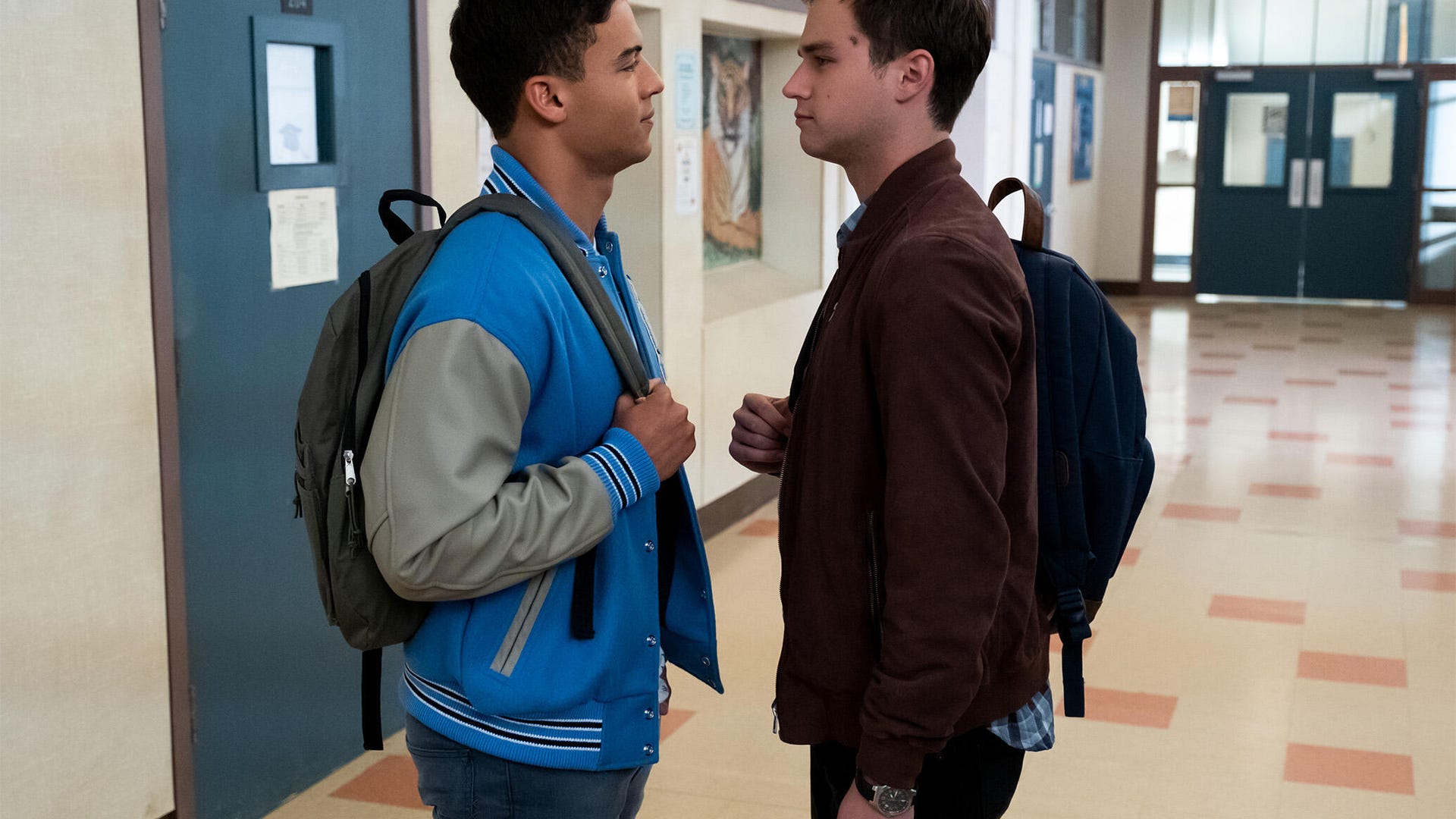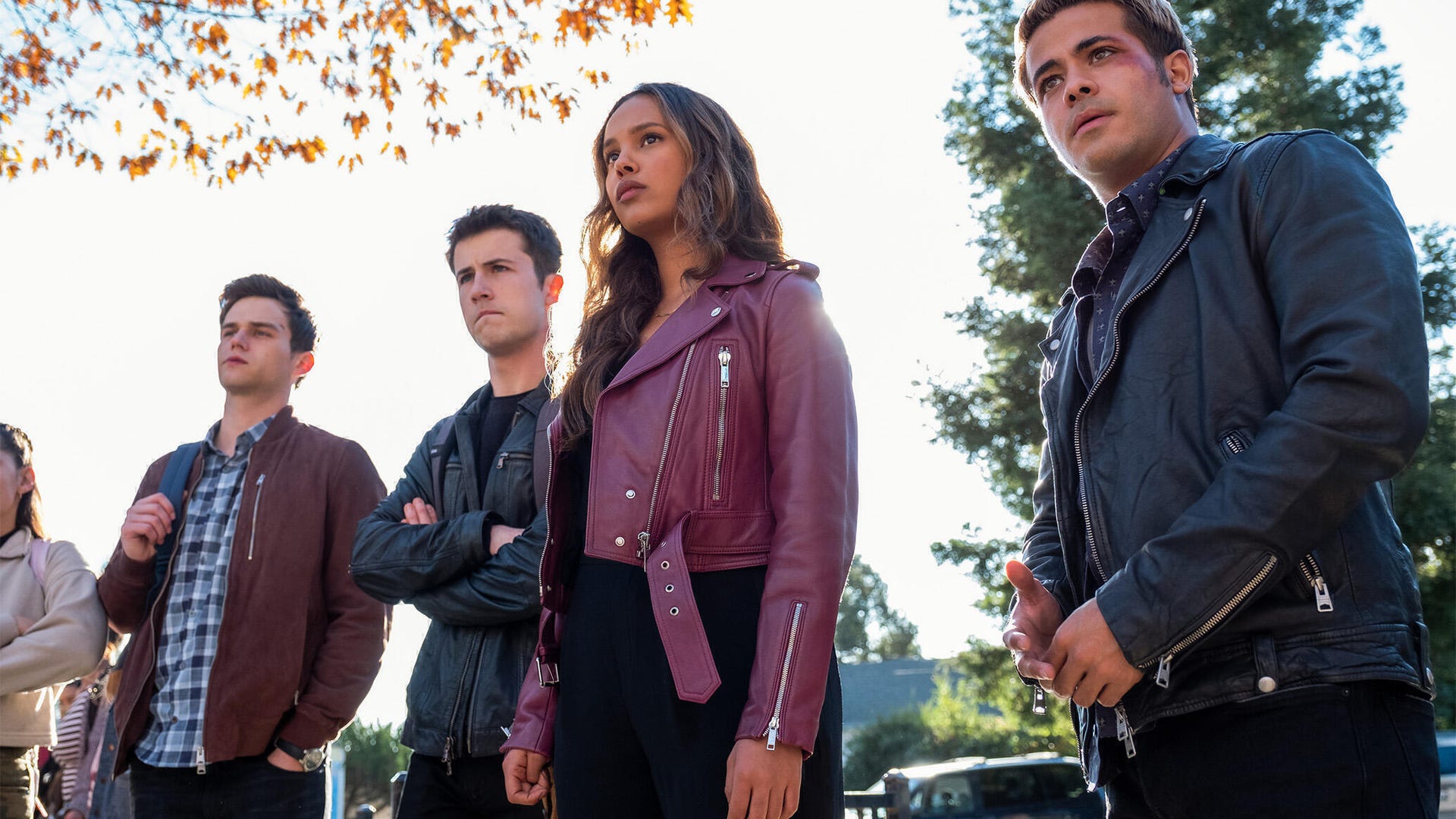Join or Sign In
Sign in to customize your TV listings
By joining TV Guide, you agree to our Terms of Use and acknowledge the data practices in our Privacy Policy.
13 Reasons Why Bungled an Opportunity to Make Its Police Brutality Storyline Effective
The polarizing Netflix series continued its tradition of only going half the distance, and it couldn't have come at a worse time
[Warning: The following contains spoilers for Season 4 of 13 Reasons Why. This article also contains discussions of police brutality and racism in America.]
13 Reasons Whyhas been a polarizing series from the start. While some praised the Netflix drama's first season for engaging in an honest conversation about suicide, others criticized the series for handling the subject matter in ways that ultimately glorified it. In the years since, the show has continually made what amounts to half-measures, attempts to address serious topics like rape, violence in schools, and mental health that only go half the distance. In the show's fourth and final season, which dropped Friday, that unfortunate trend continues, this time mishandling the topics of police brutality and racism, a move that further cements its legacy of doing more harm than good.
The eighth episode of the season features a protest and riot at the high school after a school resource officer -- a law enforcement officer stationed in the school -- attempts to arrest Season 4 newcomer Diego (Jan Luis Castellanos), a Latinx student engaged in a fight, but not Justin (Brandon Flynn), a white student also involved, who happens to be the one who actually turned their disagreement into a physical altercation. When Justin tries to intervene to help Diego, things escalate, and the SRO quickly pulls his weapon on both teens but still only arrests Diego. This depiction of discrimination and excessive use of force against a person of color arrives at a time of great unrest in America, less than two weeks after George Floyd, an unarmed Black man, died when a white police officer knelt on his neck for nearly nine minutes. Floyd's death while in police custody, as well as the police shooting of Breonna Taylor and the shooting of Ahmaud Arbery, sparked protests around the globe in support of Black Lives Matter and police reform.
In 13 Reasons Why, the actions of a racist deputy similarly serve as the catalyst for the riot at Liberty High; the students walk out after the principal (Steven Weber) ignores their concerns about Diego being treated like a criminal, and he assures them the officer will be "disciplined, if appropriate." However, the cop's bigotry is not what's galvanized the students to revolt -- it's just the last straw. All season, the students had seen an increased authority presence in what appeared to be an attempt to make the school safer: SROs, metal detectors, security cameras, and even a dean of discipline were installed in the wake of the rapes and deaths of multiple students. There was also an active shooter drill in Episode 6 that no one knew was a drill -- not even the teachers -- until the end of the episode, which led Clay (Dylan Minnette) to have a nervous breakdown and be sent to the hospital for psychiatric evaluation. All of this led to a tense environment for the students, and the riot that erupts after Diego is arrested is less about racial discrimination or the brutal way he is treated by a white deputy -- he is repeatedly thrust against lockers in addition to being the target of racist remarks -- than it is the culmination of a season-long story about the increased presence of the sheriff's department as part of a misguided attempt to keep students safe. In effect, 13 Reasons Why uses a racist cop as a catalyst and then fails to condemn or barely even acknowledge the racist law enforcement system that enables this overreach.

Jan Luis Castellanos and Brandon Flynn, 13 Reasons Why
DAVID MOIR/NETFLIXSROs have been in place in schools across the U.S. since the 1960s. Supporters argue their presence is a necessary protective measure, especially with the rise of school shootings and gun violence, but critics say they do far more harm than good, and statistics back this up. In one study in Connecticut, Black and Latinx students were more likely to be arrested and funneled into the criminal justice system through what is called the school-to-prison pipeline when an SRO was in place at a school. In fact, the arrest rate of Latinx students at schools employing SROs was six times the rate of arrests at schools without SROs. This is similar to what the NAACP Legal Defense and Educational Fund says, which is that students of color are disciplined far more harshly than their peers, with Black students being "nearly three times as likely to be suspended, and Latino students are nearly one-and-a-half times as likely to be suspended, as their white peers."
It seemed as if 13 Reasons Why was poised to address this topic when Diego was arrested and Justin was not, but the show barely acknowledges the deputy or his racism in the final two episodes of the season. After the riot, Jessica (Alisha Boe), who is biracial, explains the students' actions were in opposition to an "oppressive police state trampling on students' rights" and claims that as the school attempted to get to the bottom of the fight that led to the protest, students of color were singled out in questioning. But that's it. Nothing else is ever said about the incident with the racist SRO, systemic racism, or the use of force against students of color at Liberty. The show's weak attempt to portray the negative outcomes of over-policing minority communities, if indeed it was an attempt to do so, is also undermined by earlier episodes that glorify police as cool-headed mentors and white saviors.
13 Reasons Why: Here's Who Died in the Emotionally Turbulent Netflix Series Finale
Earlier in the season the series hinted that a deputy was targeting Tony (Christian Navarro), another Latinx student whose family was deported the season prior, but the deputy was revealed to be interested in introducing Tony to the world of professional boxing, which led to a scholarship offer from a college in Nevada. And, at the end of the season, Sheriff Diaz (Benito Martinez) comforts a distraught Clay when he bursts into the sheriff's station and claims to have a gun as a means of getting someone to listen to and acknowledge his pain. Clay, a white teen, is not punished for his actions, nor is he harmed in any way. It's hard to believe that a person of color would have been treated the same way.
By focusing solely on the goodness or badness of individual law enforcement officers, the series misses the mark on the big picture of systemic racism in law enforcement. Diego's arrest is an easy opening to address institutional racism as part of its discussion of SROs in schools, but 13 Reasons Why seems unconcerned with addressing the racism prevalent in America's institutional structures and the culture of fear it creates for young people of color; instead, the show limits itself to generally condemning an overstepping of authority in an attempt to create safer schools. It's ignorant and irresponsible to use a racist cop as a conduit for a discussion about the overreach of law enforcement and then completely ignore systemic racism in the resulting conversation.

13 Reasons Why
David Moir/NetflixIt's hard to believe the show could make things worse after such an obvious failure, but it does, because the framing of the protest and riot are also largely through Clay's eyes; he and Jessica are the leaders of the walkout and even instigate a riot against the local sheriff's department, who are fitted out in what appears to be riot gear, but it is Clay who eventually gives a rousing speech to the crowd of teens and incites their anger. "They're going to try to make us think that we're the problem," the white teen shouts into a bullhorn while atop a car. "But we are not the problem. We go to the school that they built for us. We live in the society that they made for us. And sh-- is broken. Sh-- is wrong. And they can't fix it. They won't. So it's our turn now. We're going to make it right if we have to burn it down and start over."
The fact that we see all of this happen through Clay's point of view is not surprising -- Clay is the protagonist and our entry into this narrative -- but the show has used other points of entry before. Clay is white and privileged and has benefited from this his entire life, and therefore has less to fear from the police. When he centers himself in a protest about police brutality instead of elevating the concerns of his classmates of color, it's because he and the show have the same problem: Neither one is interested in engaging meaningfully with systemic racism.
The writers of 13 Reasons Why could not have known when they were crafting this season what would happen in the real world by the time it premiered. They couldn't know the new episodes would be released in the midst of worldwide protests against systemic racism, police brutality, and the murders of Black men and women. But while public awareness may be heightened, these issues are not new to American society. There's no excuse for using racism as a cheap plot point and then forgetting it exists. 13 Reasons Why could have and should have done better, especially since the show has been criticized for its handling of sensitive topics in the past. This season's half-baked conversation about over-policing is yet another reason the show's lasting legacy won't be that it forced viewers to have powerful conversations about hard-to-talk-about topics, but rather that it failed to go far enough when it did.
13 Reasons Why is now streaming on Netflix.
